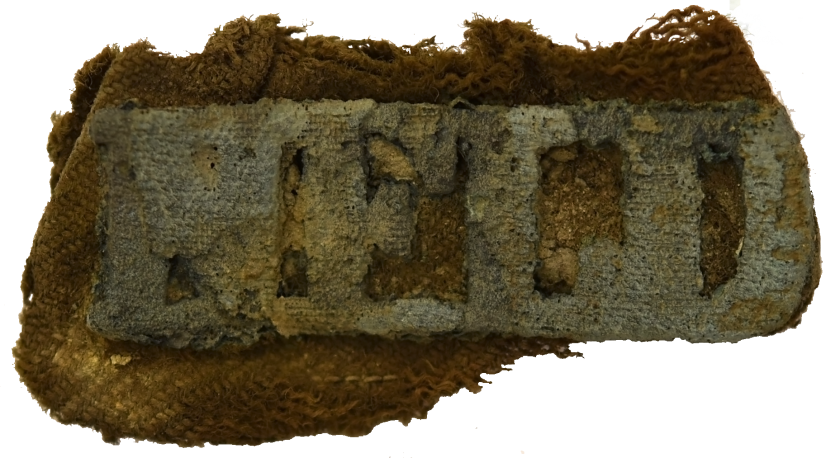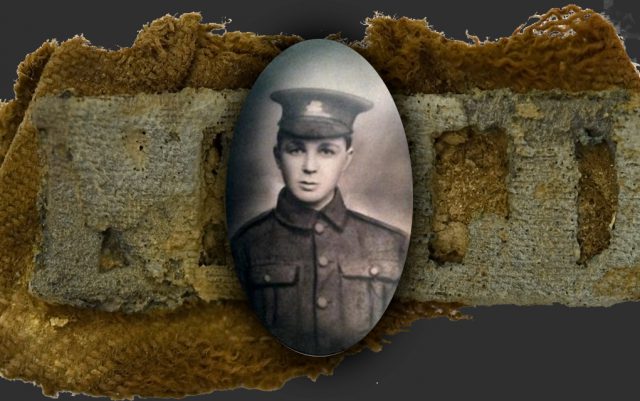The Department of National Defence and the Canadian Armed Forces have identified the remains of Private John Lambert, a First World War soldier of The Newfoundland Regiment. Private Lambert died on August 16, 1917, at the age of 17. The Newfoundland Regiment is perpetuated by The Royal Newfoundland Regiment.
Private Lambert was born on July 10, 1900, in St. John’s, Newfoundland. On August 14, 1916, at 16 years old, he lied about his age in order to enlist with the Newfoundland Regiment and serve his dominion. He claimed on his attestation paper that he was 18 years and three-months old.
On August 28, 1916, he left for the United Kingdom aboard the S.S. Sicilian. He then travelled to Ayr, Scotland, for training where he joined the 2nd Battalion, The Newfoundland Regiment. On April 25, 1917, he landed in Rouen, France, and on June 7, 1917, proceeded to join the 1st Battalion, The Newfoundland Regiment in the field, which served with the 88th Brigade of the 29th Infantry Division of the British Expeditionary Force.
On August 16, 1917, the 29th Division had taken all of its objectives in what would be known as the “Battle of Langemarck.” Private Lambert died from wounds sustained in action during the advance of The Newfoundland Regiment.
His remains were discovered alongside three British soldiers during a planned archaeological dig conducted by THV MRG (a collaborative effort between the following four archaeological firms: Monument Vandekerckhove NV, Ruben Willaert NV, Gate Archaeology BVBA, and BAAC Vlaanderen BVBA) in April 2016, near Langemark, Belgium. A combination of historical and scientific research is used to identify remains and properly lay to rest those who made the ultimate sacrifice for Canada.
The Canadian Armed Forces have notified Private Lambert’s surviving next of kin, and are providing them with ongoing support. He will be buried at the earliest opportunity in a joint ceremony organized with the Joint Casualty and Compassionate Centre of the United Kingdom’s Ministry of Defence. He will be laid to rest in the Commonwealth War Graves Commission’s New Irish Farm Cemetery in West-Vlaanderen, Belgium. The British casualties found with Private Lambert are an unknown soldier of an unknown regiment, an unknown soldier of the Hampshire Regiment and a soldier of the Royal Inniskilling Fusiliers whose identities are still being investigated.
The Canadian Armed Forces’ Casualty Identification Program fosters a sense of continuity and identity within the Canadian Armed Forces. It provides an opportunity for the family, the unit of the fallen soldier, and all Canadians to reflect upon the experiences of the men and women who made the ultimate sacrifice for their country.
“Private Lambert’s service demonstrates the courage and sacrifice of this brave service member during the First World War. Although more than a century has passed, we will never forget the ultimate sacrifice he made for Newfoundlanders and Canadians. Programs such as the Canadian Armed Forces’ Casualty Identification Program help us identify and honour those who fought for our freedoms.”
— The Honourable Harjit S. Sajjan, Minister of National Defence
By National Defence / Canadian Armed Forces

Insigne d’épaule de Terre-Neuve trouvé avec les restes du soldat Lambert. (Photo: Direction Histoire et patrimoine)
Un soldat terre-neuvien de la Première Guerre mondiale identifié
Le ministère de la Défense nationale et les Forces armées canadiennes ont identifié les ossements du soldat John Lambert, qui a combattu pendant la Première Guerre mondiale au sein du Newfoundland Regiment. Le soldat Lambert est décédé le 16 août 1917. Il avait 17 ans. Le Newfoundland Regiment est perpétué par le Royal Newfoundland Regiment.
Le soldat Lambert naît le 10 juillet 1900, à St. John’s (Terre-Neuve). Le 14 août 1916, alors qu’il n’a que 16 ans, il ment sur son âge pour s’enrôler dans le Newfounland Regiment et servir son dominion. Sur sa feuille d’engagement, il déclare être âgé de 18 ans et 3 mois.
Le 28 août 1916, il prend la mer à destination du Royaume-Uni à bord du SS Sicilian. Il se rend ensuite à Ayr, en Écosse, où il se soumet à l’entraînement avant de joindre les rangs du 2e Bataillon du Newfoundland Regiment. Arrivé par avion à Rouen, en France, le 25 avril 1917, il prend la route le 7 juin suivant pour rejoindre la position en campagne du 1er Bataillon du Newfoundland Regiment, qui livre combat avec la 88e brigade de la 29e division d’infanterie de la force expéditionnaire britannique.
Le 16 août 1917, la 29e division conquiert tous ses objectifs pendant la désormais célèbre « bataille de Langemark ». Le soldat Lambert meurt des suites de blessures infligées au combat lors de la progression du Newfoundland Regiment.
Ses ossements ont été découverts à proximité de ceux de trois soldats britanniques dans le cadre de fouilles archéologiques prévues et exécutées par le consortium THV MRG (collaboration entre quatre entreprises spécialisées en archéologie, soit Monument Vandekerckhove NV, Ruben Willaert NV, Gate Archaeology et BAAC Vlaanderen) en avril 2016, aux environs de Langemark, en Belgique. Diverses recherches historiques et scientifiques ont été combinées pour mener à l’identification des ossements découverts et conduire comme il se doit à leur dernier repos ceux qui ont consenti le sacrifice ultime pour le Canada.
Les Forces armées canadiennes ont communiqué avec le plus proche parent survivant du soldat Lambert pour lui annoncer la nouvelle, et accompagnent la famille tout au long du processus. Le soldat Lambert sera inhumé aussitôt que possible dans le cadre d’une cérémonie organisée de concert avec le Joint Casualty and Compassionate Centredu ministère de la Défense du Royaume-Uni. Il sera conduit à son dernier repos au cimetière de guerre New Irish Farmde la Commonwealth War Graves Commission, dans la province de Flandre-Occidentale, en Belgique. Les victimes britanniques trouvées à proximité du soldat Lambert sont un soldat inconnu d’un régiment inconnu, un soldat inconnu du Hampshire Regiment et un soldat des Royal Inniskilling Fusiliers dont les identités font toujours l’objet d’enquêtes.
Le Programme d’identification des pertes militaires des Forces armées canadiennes contribue au sentiment de continuité et d’appartenance au sein des Forces armées canadiennes, puisqu’il offre à la famille, à l’unité du soldat tombé au combat et à la population canadienne dans son ensemble une occasion de réfléchir sur ce qu’ont traversé ces hommes et ces femmes qui ont consenti le sacrifice ultime pour leur pays.
« Le service du soldat Lambert illustre le courage et le sens du sacrifice de ce valeureux militaire durant la Première Guerre mondiale. Même si plus d’un siècle s’est écoulé, jamais nous n’oublierons qu’il a consenti le sacrifice ultime pour les Terre‑Neuviens et les Canadiens. Des programmes comme le Programme d’identification des pertes militaires des Forces armées canadiennes nous aident à identifier et à honorer ceux qui se sont battus pour notre liberté. »
— L’honorable Harjit S. Sajjan, ministre de la Défense nationale
Par : Défense nationale/Forces armées canadiennes






